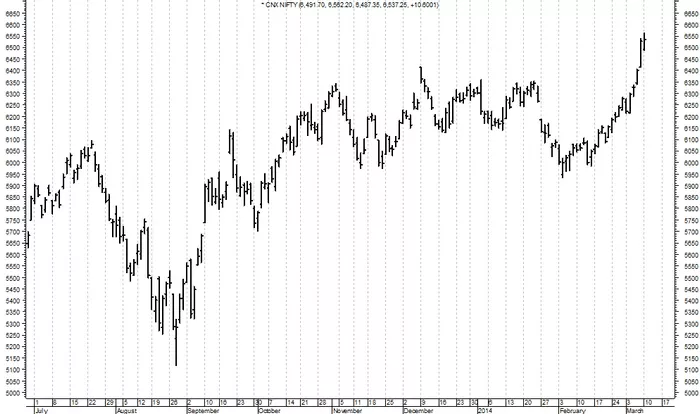Investing in stocks can be a lucrative endeavor, but understanding the expected cash flow is crucial for making informed decisions. Expected cash flow is a measure of the anticipated financial returns from an investment, encompassing dividends, capital gains, and other forms of income. This article will delve into the various components that contribute to the expected cash flow for stock investors, providing a comprehensive overview for both novice and seasoned investors.
Understanding Expected Cash Flow
Expected cash flow refers to the money that an investor anticipates receiving from their stock investments. It includes all potential income streams and capital appreciation over a specific period. Investors use expected cash flow to evaluate the potential profitability of their investments and to compare different investment opportunities.
Components of Expected Cash Flow
- Dividends
- Capital Gains
- Interest Income
- Special Dividends and Stock Buybacks
Dividends
Dividends are periodic payments made by companies to their shareholders. They represent a portion of the company’s profits distributed to investors as a reward for holding the stock. Dividends can be issued in cash or additional shares of stock.
- Regular Dividends: Most companies pay regular dividends quarterly. The amount is typically based on the company’s earnings and its dividend policy.
- Special Dividends: Occasionally, companies may issue special dividends, which are one-time payments usually made from surplus cash.
Capital Gains
- Capital gains are profits earned from selling stocks at a higher price than the purchase price. They are realized when an investor sells a stock and are classified into:
- Short-Term Capital Gains: Gains from the sale of a stock held for less than a year. These are taxed at the investor’s ordinary income tax rate.
- Long-Term Capital Gains: Gains from the sale of a stock held for more than a year. These typically benefit from lower tax rates compared to short-term gains.
Interest Income
Interest income can come from cash held in brokerage accounts or from dividends paid by preferred stocks and bonds within a stock portfolio. While not a primary source of income for stock investors, it can contribute to the overall expected cash flow.
Special Dividends and Stock Buybacks
- Special dividends and stock buybacks are additional methods through which companies return value to shareholders.
- Special Dividends: As mentioned earlier, these are one-time payments that can significantly boost expected cash flow in a given year.
- Stock Buybacks: Companies may repurchase their own shares from the market, reducing the number of outstanding shares. This can lead to an increase in the stock price and indirectly benefit shareholders through capital gains.
See Also: 7 Ways To Learn How Cash App Stock Works
Factors Influencing Expected Cash Flow
Several factors influence the expected cash flow from stock investments, including company performance, economic conditions, interest rates, and market trends.
Company Performance
The financial health and profitability of a company are primary determinants of its ability to pay dividends and generate capital gains.
Earnings: Higher earnings generally lead to higher dividends and potential capital appreciation.
Dividend Policy: A company’s approach to distributing profits can vary, impacting the regularity and size of dividend payments.
Economic Conditions
The broader economic environment affects all companies and, consequently, the expected cash flow for investors.
Economic Growth: In periods of economic expansion, companies often experience increased profits, leading to higher dividends and stock prices.
Recessions: Conversely, during economic downturns, companies may cut dividends, and stock prices may decline, reducing expected cash flow.
Interest Rates
Interest rates set by central banks influence the cost of borrowing and the attractiveness of stocks relative to other investments.
Rising Interest Rates: Higher interest rates can lead to increased borrowing costs for companies, potentially reducing their profitability and dividend payments.
Lower Interest Rates: Conversely, lower interest rates can boost corporate earnings and make stocks more attractive compared to bonds, potentially increasing stock prices and dividends.
Market Trends
Stock market trends, driven by investor sentiment and macroeconomic factors, also play a significant role in determining expected cash flow.
Bull Markets: During bull markets, rising stock prices lead to higher capital gains and often increased dividends as companies perform well.
Bear Markets: In bear markets, falling stock prices result in lower capital gains or even losses, and companies may reduce or eliminate dividend payments.
Calculating Expected Cash Flow
Calculating expected cash flow involves estimating the potential income from dividends, capital gains, and other sources over a specified period.
Estimating Dividends
To estimate dividends, investors can look at a company’s historical dividend payments and its payout ratio (the proportion of earnings paid out as dividends).
Dividend Yield: Calculated as the annual dividend payment divided by the stock’s current price, the dividend yield provides a snapshot of the income return from dividends.
Forecasting Capital Gains
Forecasting capital gains is more complex, as it requires predicting future stock prices. Investors often use historical performance, company fundamentals, and market conditions to make these predictions.
Growth Rate: Estimating the growth rate of a company’s earnings and its stock price can provide a basis for projecting capital gains.
Price-to-Earnings (P/E) Ratio: The P/E ratio can help assess whether a stock is overvalued or undervalued, aiding in capital gains predictions.
Considering Other Income
Interest income and special dividends should also be included in the expected cash flow calculation, although they may be less significant than dividends and capital gains.
Tools for Analyzing Expected Cash Flow
Several tools and methodologies can aid investors in analyzing expected cash flow, including financial statements, stock analysis software, and financial ratios.
Financial Statements
Analyzing a company’s financial statements provides insights into its earnings, cash flow, and dividend payments.
Income Statement: Shows the company’s revenues, expenses, and profits, helping investors assess its profitability.
Cash Flow Statement: Details the company’s cash inflows and outflows, highlighting its ability to generate cash for dividends and reinvestment.
Balance Sheet: Provides a snapshot of the company’s financial health, including its assets, liabilities, and equity.
Stock Analysis Software
Various stock analysis software programs offer tools for forecasting dividends, capital gains, and overall expected cash flow.
Valuation Models: Discounted cash flow (DCF) models and other valuation techniques help estimate the intrinsic value of a stock and its expected returns.
Screeners and Simulators: Stock screeners and simulators allow investors to test different scenarios and investment strategies.
Financial Ratios
Financial ratios, such as the dividend yield, payout ratio, and P/E ratio, are essential for evaluating the potential cash flow from stock investments.
Dividend Yield: As mentioned earlier, the dividend yield provides a measure of the income return from dividends.
Payout Ratio: The payout ratio indicates the proportion of earnings paid out as dividends, helping assess the sustainability of dividend payments.
P/E Ratio: The P/E ratio helps determine if a stock is overvalued or undervalued, impacting expected capital gains.
Strategies for Maximizing Expected Cash Flow
Investors can employ various strategies to maximize their expected cash flow from stock investments, including dividend investing, growth investing, and diversification.
Dividend Investing
Dividend investing focuses on stocks that provide regular and reliable dividend payments.
High Dividend Yield Stocks: These stocks offer higher income returns through dividends, appealing to income-focused investors.
Dividend Growth Stocks: Companies with a history of increasing their dividends over time can provide both income and capital appreciation.
Growth Investing
Growth investing targets companies with high potential for capital appreciation.
High Growth Companies: These companies reinvest their earnings to fuel rapid growth, potentially leading to substantial capital gains.
Emerging Markets: Investing in emerging markets can offer higher growth prospects, albeit with increased risk.
Diversification
Diversification involves spreading investments across different sectors, industries, and geographic regions to reduce risk and enhance potential returns.
Sector Diversification: Investing in various sectors can mitigate the impact of industry-specific risks.
Geographic Diversification: International investments can reduce exposure to country-specific economic conditions and political risks.
Risks and Challenges
While expected cash flow analysis is vital for stock investors, it comes with inherent risks and challenges.
Market Volatility
Stock prices can be highly volatile, leading to fluctuations in capital gains and potential losses.
Economic Cycles: Economic downturns and recessions can negatively impact stock prices and dividends.
Geopolitical Events: Political instability and global events can cause market turbulence.
Company-Specific Risks
Individual companies face specific risks that can affect their profitability and dividend payments.
Financial Performance: Poor financial performance can lead to reduced dividends and declining stock prices.
Management Decisions: Strategic errors and mismanagement can impact a company’s earnings and stock performance.
Interest Rate Changes
Fluctuations in interest rates can affect stock valuations and investor returns.
Rising Rates: Higher interest rates can reduce the attractiveness of stocks compared to bonds, potentially leading to lower stock prices.
Falling Rates: Lower interest rates can boost stock prices but may signal economic challenges.
Inflation
Inflation can erode the real value of dividends and capital gains, reducing the purchasing power of expected cash flow.
Rising Inflation: High inflation can lead to increased costs for companies, potentially reducing their profitability and dividend payments.
Inflation Protection: Investing in sectors and companies with pricing power can help mitigate the impact of inflation.
Conclusion
Understanding the expected cash flow for stock investors is crucial for making informed investment decisions. By analyzing dividends, capital gains, and other income sources, investors can assess the potential returns from their stock investments. Factors such as company performance, economic conditions, interest rates, and market trends all influence expected cash flow. Utilizing tools like financial statements, stock analysis software, and financial ratios can aid in this analysis. Employing strategies such as dividend investing, growth investing, and diversification can help maximize expected cash flow while managing risks. Ultimately, a thorough understanding of expected cash flow enables investors to make more informed and strategic investment choices.
Related topics:






























